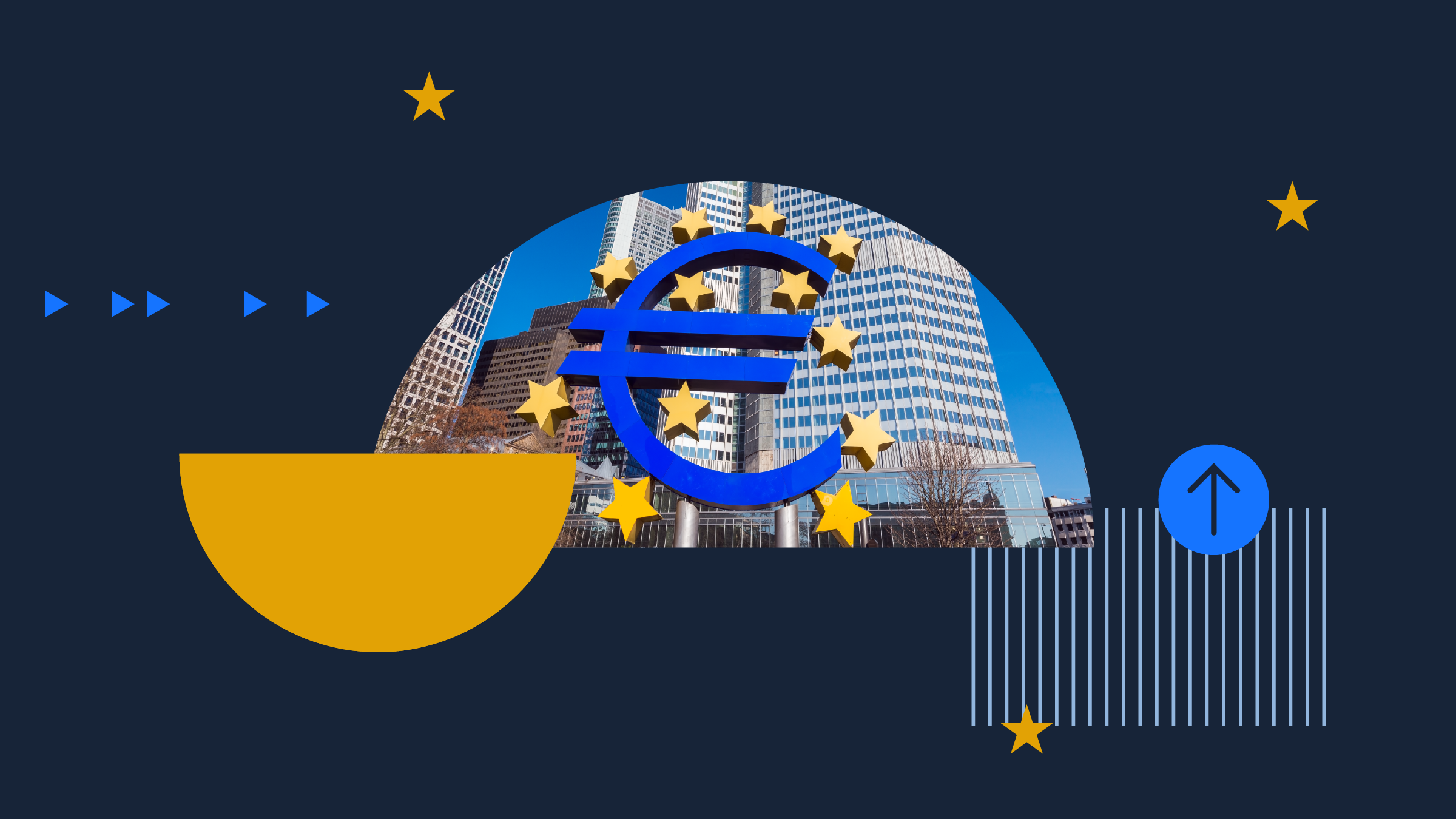
The euro faces an uncertain path forward after earlier gains in 2024 were reversed in the wake of Donald Trump’s electoral victory.
Between April and September, the euro had strengthened against the US dollar, rising as high as USD1.12, driven by the perception that the Federal Reserve had more room to cut interest rates than the European Central Bank. Also, rising US unemployment to levels that presaged a potential recession had led to a period of weakness for the greenback in August.
Since September, economic data have confirmed the strength of the US labor market, consumption and growth. Donald Trump’s rebound in polling during the weeks before the election also strengthened the dollar as investors began to discount tariffs, tax cuts and deregulation.
What Trump Means for the Dollar
When Trump’s victory then materialized, the euro fell to a one-year low of USD1.04, close to parity.
“The strengthening after Trump’s victory is predominantly related to the anticipation of increased tariffs, as shown by the relative movements not only against the euro, but also against the renminbi, Mexican peso and Canadian dollar,” says Teresa Gioffrida, investment strategist at UBS AM, who also cautions: “We believe that some statements have more the intent to initiate negotiations and indicate that Trump is willing to use tariff threats also to promote non-trade objectives.”
The Euro May Even Rebound Next Year
“The U.S. dollar is extremely overvalued against the major developed countries, outside of the Japanese yen, and at the moment markets have greatly reduced expectations about the Fed’s rate cuts,” Giuffrida also explains. “This leads to a high risk of a reversal, especially in the case of particularly weak growth data, which, however, is not our central case at the moment.”
Mark Haefele, chief investment officer at UBS Global Wealth Management, also sees potential for a weakening dollar: “In the short term, several factors could sustain the dollar’s strength, including tax cuts and deregulation attracting capital inflows into US markets,” he tells Morningstar. “The US economy appears stronger than others, but the dollar’s current valuation seems stretched. Concerns about the budget deficit could weaken the dollar later in the year. We anticipate a weaker dollar by the end of 2025 and suggest investors use periods of dollar strength to diversify,” Haefele says.
“In the short term, we do not expect a severe appreciation of the greenback,” Peter Kinsella, global head of forex strategy at UBP, tells Morningstar in an interview.
“The consensus view that EUR-USD will trade towards parity (and below) is likely to be incorrect because the conditions for a material break lower are not in place. Historically, the euro’s decline towards and below parity manifested itself during a massive balance of payments shock. The same is not true at present.”
Raphael Olszyna-Marzys, international economist at J. Safra Sarasin, sees the dollar “around current levels for most of the year, essentially operating in a narrow range.” He sees the greenback “already priced at a high level, so it is unlikely to experience another strong rise, but at the same time, there is little reason for it to weaken.”
The economist speaks of a euro-dollar ratio of 1.05 by mid-2025, while UBS GWM’s Haefele predicts a significantly stronger euro, with the EUR-USD exchange rate being USD1.08 in March 2025, USD1.09 in June 2025 and USD1.12 in December 2025.
Will the ECB Cut Rates Faster in 2025?
Olszyna-Marzys anticipates a much more dovish ECB than the Fed. “We expect overall inflation in the euro area to continue to fall, from 2.5% to 2%, while in the US it will move sideways, around 2.5-2.6%,” explains the economist.
“We expect the ECB to cut its deposit rate by 150 basis points over the next year to 1.75%. In our view, the Fed will make only 75 basis points of rate cuts between now and the end of next year.”
That would leave US interest rates, which haven’t fallen as steeply as ECB rates this year, even higher relative to the Eurozone. Higher rates tend to improve a currency’s attractiveness, drawing speculative flows in search of greater returns.
UBP’s Peter Kinsella also believes “the ECB could be justified in cutting rates faster in the short term to offset weak activity and the downturn in inflation expected in the first few months of 2025”, cautioning that “the ECB itself might be reluctant to give the impression of de facto supporting the biggest-spending countries such as France, Belgium and Italy, which must first get back on the road to fiscal rigor”.
He expects inflation to “persist in the early months of 2025, with favorable base effects on core prices in developed countries.”
UBS GWM’s Haefele doesn’t expect the same level of policy divergence, forecasting inflation in the eurozone falling from 2.4% in 2024 to 2.1% in 2025 and from 2.9% to 2.5% in the United States. “We expect both the ECB and the Fed to cut interest rates by 125 basis points by the end of 2025,” he says, confident that inflation is under control. “The Fed is likely to overlook one-off price increases related to tariffs.”
What a Stronger Euro Would Mean
A rebounding currency could hurt major European industries, all of which rely on exports. On the other hand, a stronger euro also makes imports cheaper and increases consumers’ disposable income.
“With expectations of a stronger euro relative to the dollar in 2025, investors should use periods of dollar strength to diversify USD cash and US dollar high-grade fixed income into EUR and euro-denominated equivalents,” says Mark Haefele. “European investors,” he says, “should consider currency hedging their US equity exposure to mitigate the risk of a weaker dollar offsetting local currency gains in the US market.”
How to Hedge Your Portfolio Against Currency Risk
A country’s interest rates have a direct impact on exchange rates: as the US has higher rates than the eurozone, 4.5%/4.75% versus 3%, holding US dollar assets becomes more attractive to global investors, attracting inflows for those wanting to earn higher yields. Exchange rates also reflect economic growth and inflation expectations. Again, the US economy is growing faster than that of the eurozone. The US dollar also benefits from being the world’s “reserve currency”, and global investors like holding dollar assets such as US government bonds.
For those who want to avoid having to account for currency movements in their investments, an increasing number of funds and ETFs offer a hedged share class, which aims to minimize the currency risk on final returns.
Hedging is never perfect, and as the table above shows, hedged and foreign-currency performance can deviate. That’s partly because hedged fund classes charge higher commissions. For most retail investors, the unhedged option remains perhaps the easiest way, especially when one has a long-term horizon and in the case of global funds where there are many underlying currencies potentially moving in different directions.
The author or authors do not own shares in any securities mentioned in this article. Find out about Morningstar's editorial policies.
























